#Isabel Afonso
Text
NEM Self 134 - Curator Fatma Korkut
FEATURED ARTWORKS BY: Roger Guetta, Jane Schultz, Laurence Brugerie,Lynne Jordan, Noah Fentz, Joe Kandiko, Isabel Afonso, Barbara Banthau, Janis Brandenburg Lee.
#Fatma Korkut#Roger Guetta#Jane Schultz#Laurence Brugerie#Lynne Jordan#Joe Kandiko#Isabel Afonso#Barbara Banthau#Janis Brandenburg Lee
0 notes
Text





Maruchi Fresno as Isabel of Aragon

Reina Santa 1947

Antonio Vilar as King Dinis of Portugal
Fernando Rey as Prince Afonso
#reina santa 1947#maruchi fresno#antonio vilar#fernando rey#isabel of aragon#saint elisabeth of portugal#dinis of portugal#afonso IV of portugal
6 notes
·
View notes
Text

Dona Isabel de Bragança and Her older son, Prince Dom Afonso, today during the Procession in honor to Our Lady of Conception, Vila Viçosa.
(source: Portuguese_Royal_Family on Instagram)
#portugal#portuguese royal family#familia real portuguesa#prince afonso#isabel de braganza#dom afonso de braganza
3 notes
·
View notes
Text

Watching
THE STRANGE CASE OF ANGELICA
Manoel de Oliveira
Portugal, 2010
#watching#2010#Manoel de Oliveira#Portuguese films#Afonso Bonito#Carmen Santos#Paulo Matos#Ricardo Trêpa#Adelaide Teixeira#Isabel Ruth#Sara Carinhas
0 notes
Text

Who: Caetana Botelho Afonso (caetanaba)
What: Isabel Marant Oskan Moon Bag in Cream (690.00€). And HERE
When: Instagram - June 23, 2024
Worn with: Lewis & Melly dress, Amambaih sandals, Parfois sunglasses
#caetanaba#caetana botelho afonso#fashion#isabel marant#bags#2024#june 2024#june 23 2024#instagram 2024#instagram#fashion inspo
0 notes
Text
4 portuguese monarchs who might had same-sex relationships:
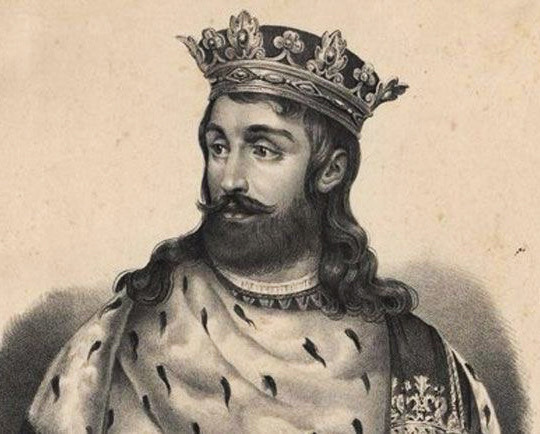
1) Pedro I of of Portugal, certainly, one if the most renowned portuguese monarchs, largely due to the saga of “love and passion” with Inês de Castro. Yet, it was common knowledge that she wasn't the Pedro’s only love: he harboured a passion for his squire, Afonso Moreira, a relationship that ended as disastrously as his other romantic (or not) entanglements. On one fateful occasion, Afonso was caught in bed with Catarina Tosse, wife of Lourenço Gonçalves, who was an esteemed magistrate.
Throughout his reign, Pedro earned the epithet “the Cruel” for his ruthless administration of justice, whereby transgressions of any magnitude often resulted in swift execution. Pedro’s decision to order Afonso’s castration as punishment for his adultery starkly manifested his merciless ethos. Nevertheless, according to Fernão Lopes, a chronicler of portuguese court at the time, in chapter VIII of “Crônica de el-rei D. Pedro I”, his harshness stemmed from a surge of jealousy on the king’s part upon discovering his beloved squire’s relationship with a woman.
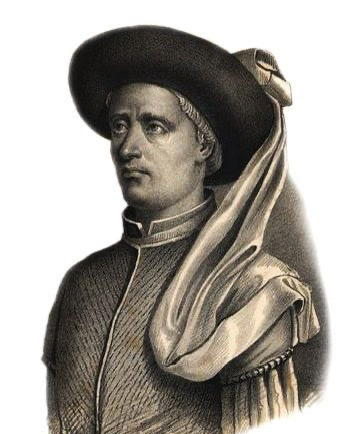
2) Prince Henry, revered as “the Navigator”, occupies a central role particularly during the epoch of maritime exploration.
He was hailed as “chaste prince”, having never entered into wedlock, with no historical accounts suggesting (with certainty) any relationships with women. In the annals of 1444, Henry experienced the loss of a “dear friend” in Ceuta, a tragedy that pluged him into 3 months of profound mourning. Both his father, King John I, and his brother, King Edward, counselled him to “rein in his emotions, lest he indulge men beyond what virtue dictates.”
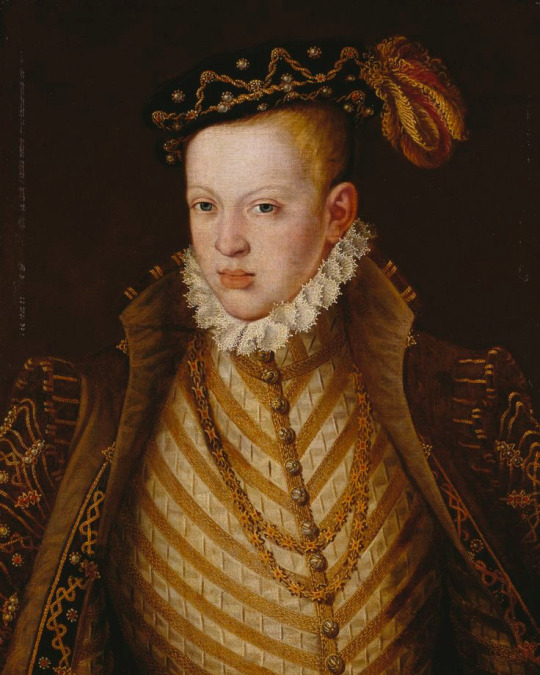
3) King Sebastian contracted gonorrhoea at the age 10/11, a malady documented in medical records at the time that rendered him sexually impotent. Some historians posit that this affliction may have dissuaded Sebastian from pursuing matrimonial unions or romantic relationships with women.
Even though, the “Crônicas de el-rei D. Sebastião” by Friar Bernardo da Cruz recounts an incident during a hunt in the Alentejo, where the entourage of nobles accompanying King Sebastian were stirred by a commotion. Investigating the disturbance, they stumbled upon the monarch locked in an embrance with a fugitive slave amidst the woodland.

4) King Afonso VI, sibling to Queen Catarina of Braganza, earned a reputation for rebeliouness and unruliness from a tender age, yet he harboured no ambitions for kingship.
His reign , marred by a series of missteps, was etched in history for its futile ventures. Despite grappling with severe health afflictions — such as partial paralysis stemming from hemiplegic fever, and scourge of bulimia — Afonso found solace in nocturnal escapades with his inner circle of friends. Among them was António Conti, an intalian peddler of opulent attire and accoutrements to Europe’s nobility. Conti’s sway in Afonso’s court burgeoned as he assumed the role of sartorial advisor and facilitator of introductions to foreign luminaries. Also, both grew increasingly closer to each other, with Afonso avoiding royal gatherings to spend time with Conti, mostly in his chambers.
In 1666, Afonso took the hand of Maria Francisca Isabel of Savoy, yet their union was fleeting. Maria, citing non-consummation owing to Afonso’s hemiplegia, sought an annulment. In letters to his sister, he bemoaned Maria’s coercive measures, by which she compelled him into relationships with 14 courtesants in a bid to unearth the root of their marital discord.
Seeking to shield Afonso’s sovereignty and secure the portuguese lineage, Luisa de Gusmão, his mother, sanctioned the arrest and subsequent exile of Conti to the distant shores of Brazil.
#i am sorry for how long it is#but i really wanted to post it#so there you have#theres other monarchs to talk about#but these are the ones with the most evidences#pedro i of portugal#prince henry#king sebastian#afonso vi of portugal#portugal#story time
16 notes
·
View notes
Text
Nyotalia, 2pNyotalia, 2p!Talia, Hetalia headcanon names
Nyo!America - Amelia
Nyo!England - Elizabeth
Nyo!France - Catherine
Nyo!Russia - Anna
Nyo!China - Chun-Yan
Nyo!Canada - Marguerite
Nyo!Italy - Alice
Nyo!Germany - Monika
Nyo!Japan - Ponko
Nyo!Prussia - Julia
Nyo!Romano - Chiara
Nyo!Spain - Carmen
Nyo!Austria - Therese
Nyo!Switzerland - Adelheid
Nyo!Denmark - Hanne
Nyo!Sweden - Astrid
Nyo!Norway - Ingrid
Nyo!Iceland - Guðrún
Nyo!Finland - Aino
2pNyo!America - Caroline
2pNyo!England - Rose
2pNyo!France - Isabelle
2pNyo!Russia - Elena
2pNyo!China - Qiuyan
2pNyo!Canada - Anne
2pNyo!Italy - Bianca
2pNyo!Germany - Luise
2pNyo!Japan - Mameko
2pNyo!Prussia - Hildegard
Seychelles - Véronique
Nyo!Seychelles - Michel
Liechtenstein - Erika
Nyo!Liechtenstein - Klaus
Monaco - Sophie
Nyo!Monaco - Jean
Belgium - Emma
Nyo!Belgium - Anri
Luxembourg - René
Netherlands - Abel
Denmark - Magnus
Norway - Sigurd
Iceland - Egill
Finland - Timo
Sweden - Bernhard
Nyo!Lithuania - Rūta
Nyo!Latvia - Laima
Nyo!Turkey - Hatice
Nyo!Greece - Daphne
Nyo!Egypt - Fatima
Portugal - Afonso
Nyo!Portugal - Maria
Nyo!Hungary - István
Slovakia - Jozef
Czech - Hedvika
Nyo!Poland - Agnieszka
2p!Poland - Jan
Scotland - Callum
Wales - Dylan
Northern Ireland - Conor
Ireland - Ronan
Cuba - Carlos
Ecuador - Jose
Moldova - Vasile
Romania - Alexandru
Bulgaria - Dimitar
Serbia - Vuk
Croatia - Stjepan
2p!Italy - Lorenzo
2p!Romano - Flavio
2p!Germany - Siegfried
2p!Japan - Kiri
Nyo!Belarus - Mikita
Ukraine - Olga
Nyo!Ukraine - Bogdan
Australia - Ralph
New Zealand - George
Nyo!New Zealand - Charlotte
Wy - Olivia
Hutt River - Paul
Molossia - Jacob
Slowjamastan - Liam
Domain - Nicholas
Stomaria - Harry
Aerica - Michael
Ladonia - Oscar
Kugelmugel - Leopold
Seborga - Marcello
2p!America - Thomas
2p!England - Edmund
2p!France - André
2p!Russia - Alexander
2p!China - An
Genoa - Giovanni
HRE - Otto
Bavaria - Karl
Saxony - Heinrich
Hessen - Wilhelm
Picardy - Gabriel
Cyprus - Giorgos
TRNC - Mustafa
Rome - Maximus
Ancient Greece - Athena
Nyo!Korea - Soo-Jin
Taiwan - Xiao-Mei
Nyo!Taiwan - Chih-Ming
Hong Kong - Ka Lung
Nyo!Hong Kong - Lan
Vietnam - Lien
Nyo!Vietnam - Tuấn
15 notes
·
View notes
Text
Thread about Joanna of Castile: Part 8.2: “A Mother's Distress: Juana's Turbulent Departure from the Castle”
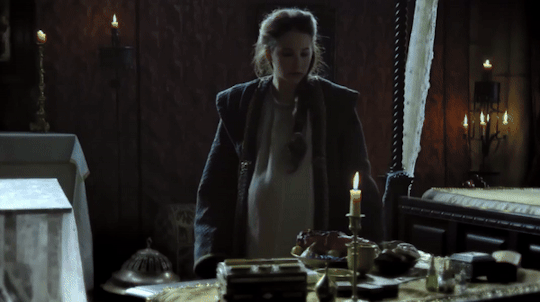



Guessing that her mother was trying every trick she could think of to
keep her, Juana abandoned pleading and talking. Instead, she staged an astonishing display of histrionic, even hysterical, behaviour, indulging in tactics she would employ for the rest of her life whenever she was thwarted or powerless. She refused to eat, to talk, or to sleep, she attempted to force a ship’s captain to prepare to sail.
On a cold November night, Juana fled, half-clad, from the castle.
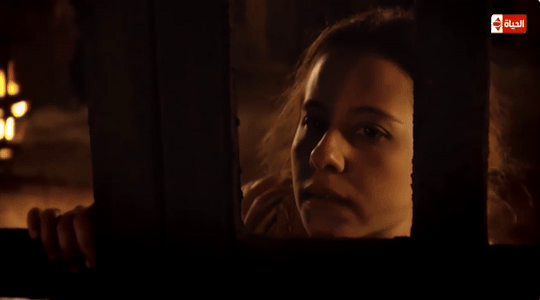


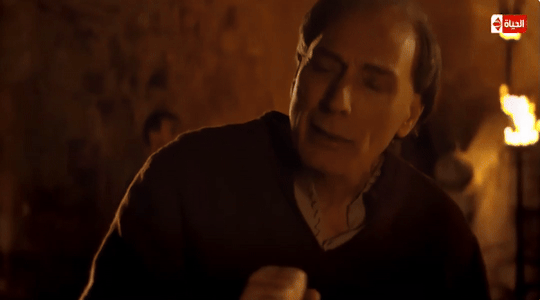


When she realised that Isabel had ordered that the gates be shut, she
“Remained in the outer precinct of the house all evening and all night and all the next day until the second hour in the humidity and night dew and without either hat or coat, during one of the coldest nights of the year so far, and not for a moment would she return to her room.”
She even threatened the bishop with death and torture for keeping her locked up.
Martire describes her prowling the outer precincts of the castle like “an African lion.”
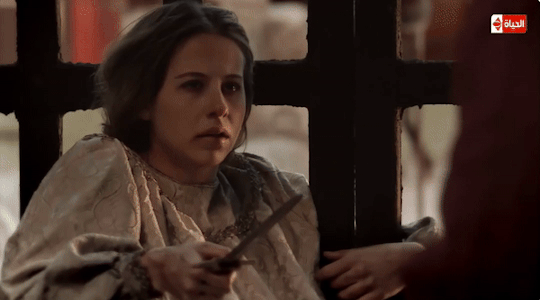

The international fair was in full swing, with the saddle and leather workers engaging in trade close to the castle walls. Concerned that Juana’s departure would cost her authority and reputation, Isabel sent a series of high-ranking emissaries, including Cisneros, in vain attempts to persuade her to return inside.

In the end, Isabel had to come in person:
“With more effort and haste, and making longer days of it than I knew was good for my health.”
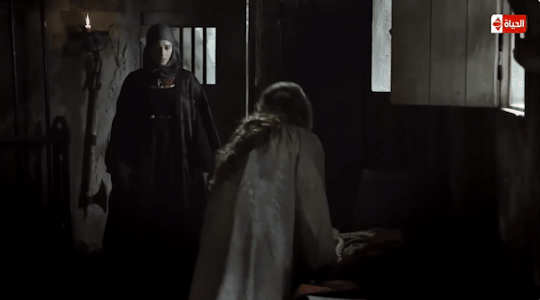
But Juana :
“Spoke to me so heatedly and with words so disrespectful and so far, beyond what a daughter should say to a mother, that had I not seen the state she was in I would not have tolerated it for a moment.”

We do not have Juana’s account. Did she, when arguing with her mother, venture into the darker territory of Isabel’s past? Might she even have referred to Isabel’s role in the descasamiento of Afonso V of Portugal and Juana (‘la Beltraneja’) of Castile when the war of the Castilian succession of 1475–1479 ended in their defeat? The heir to the throne of Castile, Enrique IV's daughter and heir, was still confined to monastic confinement in Portugal in 1503, but she would never give up her claim to the crown.
On 2 December 1503, Lope de Conchillos wrote to his uncle, Fernando's secretary, Miguel Pérez de Almazán, that Isabel was well but “very afflicted and tired” of the princess.
In March 1504, Juana was finally allowed to leave the country. In the end, her tantrums worked. The bishop of Catania, Diego Ramirez de Guzmán, was sent with her to strengthen the Spanish diplomatic presence in Brussels. Moreover, Diego Ramirez de Villaescusa, bishop of Málaga, did not accompany her.


Juana’s journey, from beginning to end, was a reversal of the first. There were no tears when she left Laredo, but Philip eagerly awaited her at Blankenburg/Blankenberge.
While Isabel wondered if she would stay as unhappy as she was while she was here, she was the talk of the Low Countries. Juana's decision to leave Castile would have big effects on her future and the kingdoms she ruled.
Sources: Fleming, G. B. (2018). Juana I: Legitimacy and Conflict in Sixteenth-Century Castile (1st ed. 2018 edition). Palgrave Macmillan.
Fox, J. (2012). Sister Queens: The Noble, Tragic Lives of Katherine of Aragon and Juana, Queen of Castile. Ballantine Books.
Gómez, M. A., Juan-Navarro, S., & Zatlin, P. (2008). Juana of Castile: History and Myth of the Mad Queen. Associated University Presse.
#joanna of castile#juana i of castile#philip the handsome#juana la loca#isabel#juana the mad#juana of castile#johanna van castilie#irene escolar#spanish monarchy#spanish princess#infanta#spain#philip de schone
12 notes
·
View notes
Text

O pai
"João Lucas Marcos Mateus tinha as mãos cheias de alfaces plantadas e de açoites nos cães. Os nós dos seus dedos pareciam os cotovelos de Isabel e o cheiro que trazia era como o de Deus. Deus cheira a touro, a terra e ao ventre das coisas."
Afonso Cruz, "Jesus Cristo bebia cerveja"; pintura de Paul Cézanne.
7 notes
·
View notes
Text
Our Contestants
1: Maria Leopoldina of Austria, First Empress of Brazil
2 Dona Maria I of Portugal
3: Dona Maria II of Portugal
4: Isabel, Princess Imperial of Brazil
5 Carlota Joaquina de Bourbon
6: João I, Duke of Bragança
7 João IV, King of Portugal
8: Afonso I, Duke of Bragança
9: Fernando I, Duke of Bragança
10: Jaime I, Duke of Bragança
11: Teodósio I, Duke of Bragança
12: Teodósio II, Duke of Bragança
13: Afonso VI of Portugal
14 Pedro II of Portugal
15: João V of Portugal
16: João VI of Portugal
17: Pedro II of Portual
18 Pedro I of Brazil/ IV of Portugal
19: Miguel I of Portugal
20: Pedro V of Portugal
21: Luís I of Portugal
22: Carlos I of Portugal
23: Manuel II of Portugal
24 Dom Pedro II of Brazil
25: Teresa Cristina, Empress of Brazil.
26: Catherine de Bragança, Queen Consort of England, Scotland, and Ireland
27: Infante Dom Manuel, Candidate for the throne of Poland
28: José I of Portugal
29: Carol II of Romania (Carlos II in Portuguese)
30: Ferdinand I of Romania
31: Infantá Antonia de Bragança, Princess Consort of Hohenzollern
32: Amélie of Leuchtenberg
33: Infanta Isabel Maria, Regent of Portugal
34: Mariana Vitória of Spain, Queen Consort of Portugal
35: Maria Francisca of Savoy (Consort to Afonso VI and Pedro II)
36: Maria Pia of Savoy (Queen-Consort to Luís I of Portugal)
6 notes
·
View notes
Text
NEM Double Exposure 59 - Curated by Merih Soylu
FEATURED ARTWORKS BY: David Babington, Nukhet Poda Gofer, Thomas Kinder, Raven Garland, Becky Menzies, Grazia Russo Corucci, Isabel Afonso, Laurence Brugerie, Sukru Mehmet Omur.
#Merih Soylu#David Babington#Nükhet Poda Göfer#Grazia Russo Corucci#Isabel Afonso#Thomas Kinder#Raven Garland#Becky Menzies#Laurence Brugerie#Sukru Mehmet Omur
0 notes
Text

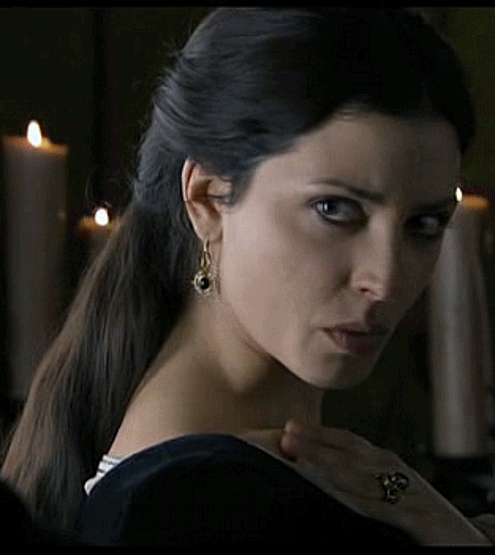

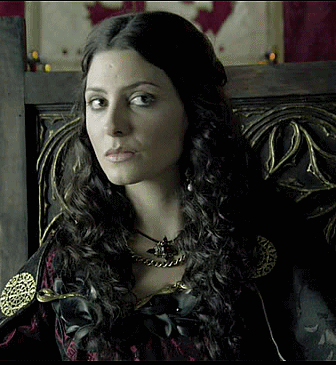
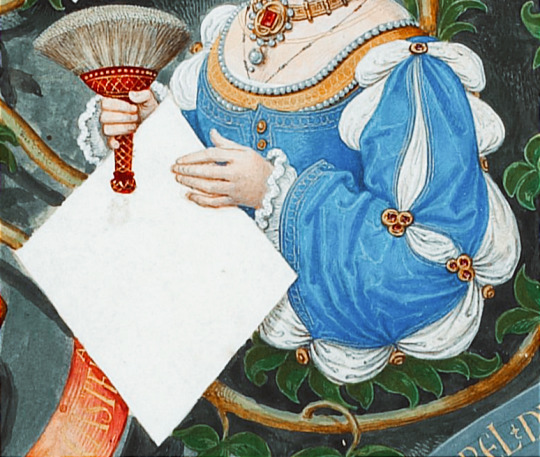
Juana of Portugal (1439-1475)
She was the posthumous daughter of King Duarte of Portugal and his wife Leonor of Aragon. Juana grew up in exile with her mother, due to the intrigues of the Portuguese court, and lived first at the Monastery of Santa María in Medina del Campo and later in Toledo, where Leonor of Aragon died. At the age of six, Juana returned to the Portuguese court of her brother Afonso V.
In 1455 the young Juana married her cousin Enrique IV of Castile, who had repudiated his first consort after thirteen years of marriage. The couple produced no children. The marriage was annulled on the grounds of an impotence that was specific rather than general, an impotence that applied only to Enrique’s relationship with Blanca of Navarre. Yet such an extraordinary explanation amounted to a case of maleficium (spell), with the clear implication that Blanca was the guilty party, and in addition she was obliged to leave Castile and return to Navarre.

Juana of Portugal was described as beautiful, cheerful and coquettish. The sources speak of the licentiousness introduced by the young Queen and her ladies in the austere Castilian court. They liked to use perfums, makeups, dresses that displayed too much décolletage, and flirting with men. One of her ladies, Guiomar de Castro, was King’s mistress, causing the anger of the Queen, and other, Mencía de Lemos, was Cardinal Mendoza’s mistress.
Six years after her wedding, Queen Juana was pregnant. Some say it was a miracle, others that it was the result of some sort of artificial insemination that the couple had tried, as was recorded by a german traveler. During this period, Juana insisted that Enrique's teenaged brother and sister, Alfonso and Isabel, forcefully be brought to the court and away from their sick mother. Many saw this as a way of making sure her daughter's path to the crown would encounter no obstacles. The Queen gave birth to a daughter named Juana, officially proclaimed heir to the Crown of Castile and created Princess of Asturias.
Queen Juana planned the marriage between her sister-in-law, Isabel of Castile, and her brother Afonso V of Portugal, and her daughter with her nephew Prince Joao. She wanted with these weddings an annexation of the Crown of Castile with the kingdom of Portugal.
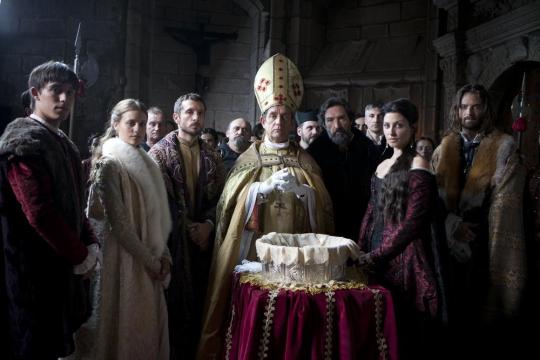
In early 1460s, Castilian nobles became dissatisfied with the rule of Enrique IV, and believed that Princess Juana was not King’s daughter. They called her la Beltraneja, a mocking reference to her supposed illegitimacy. Propaganda and rumour encouraged by the league of rebellious nobles argued that her father was Beltrán de la Cueva, a royal favorite of low background who had been elevated to enormous power by Enrique and who, by some, has been suggested as Enrique's lover.
Many nobles refused to recognise Princess Juana and preferred that Enrique instead name his younger half-brother, Alfonso as his heir. This was agreed to on the condition that Alfonso marries little Juana. Not long after this, Enrique reneged on his promise and began to support his daughter's claim once more. The nobles in league against him conducted a ceremonial deposition-in-effigy of Enrique outside the city of Avila and crowned Alfonso as a rival king.
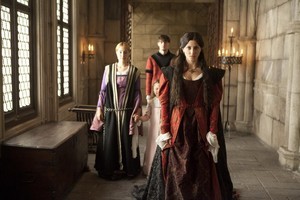
Queen Juana and her daughter were removed from the court. They lived in various castles as hostages, separately or together, protected by a faction of the nobility. The love affair of Queen Juana with the Bishop Fonseca’s nephew, Pedro of Castile, and the birth of her two illegitimate sons, caused great scandal. As a result of the need to conceal the pregnancy of her illegitimate sons, Juana of Portugal is considered the inventor of the farthingale.
In 1468, Alfonso of Castile died and Princess Juana was stripped of her succession-rights. Her aunt, Infanta Isabel, was placed before her, on condition that Isabel marry a man chosen out by the monarch. Queen Juana and her daughter sent a formal appeal to the Supreme Pontiff. Enrique accepted to divorce his wife and send her to Portugal, but Juana remained in Castile as king's wife, though separated of her husband. Isabel married Fernando of Aragon with the opposition of Enrique IV.
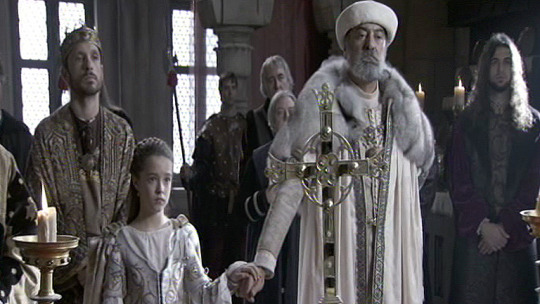
In 1470, Princess Juana was engaged and then married by proxy to the Duke of Guienne, brother of Louis XI of France. In the face of the French ambassador, King Enrique and Queen Juana swore before a crucifix that the Princess was their legitimate daughter. The French marriage never consummated, because the duke died two years later in France. Queen Juana always defended her daughter’s rights to the throne, and she had an active political participation. Queen Juana tried to get the support of nobles and cities, but with meager success and without palpable results. In 1474, Enrique IV died at the Alcázar of Madrid and rumors circulated that the late monarch had been poisoned, his wife and his daughter demanded an investigation. Queen Juana died a few months after her husband’s death at the age of 36. In the last months of her life, she lived at the convent of San Francisco in Madrid. The cause of her death is unknown.
Bárbara Lennie played Juana of Portugal in TV series "Isabel"
#juana de portugal#juana de avis#joan of portugal#women in history#spanish history#barbara lennie#Isabel tve#enrique IV#juana la beltranejs#juana de trastamara#juana de castilla
26 notes
·
View notes
Text
youtube

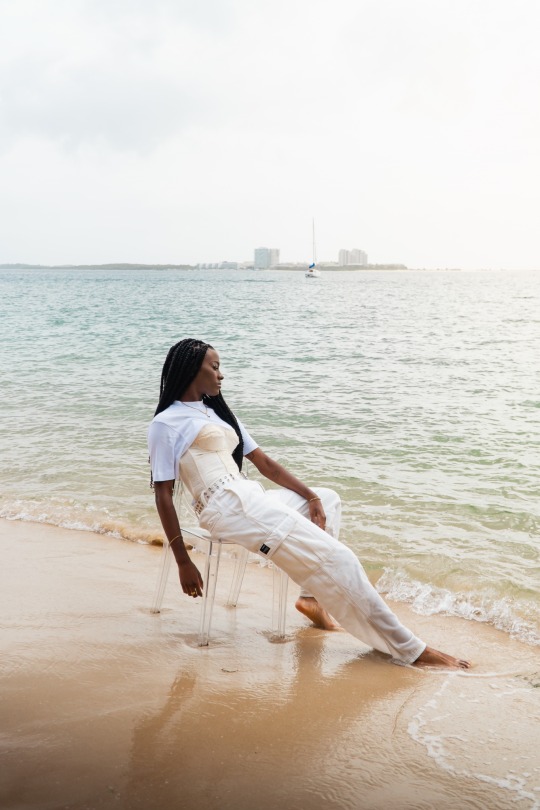

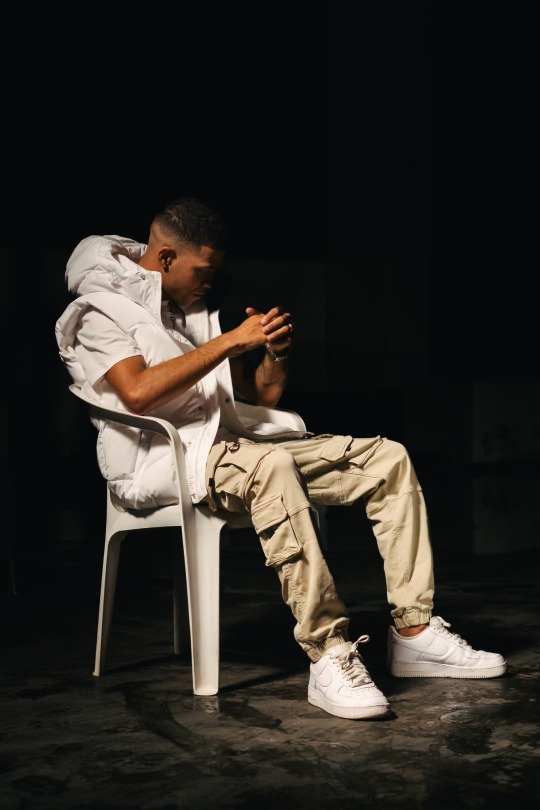
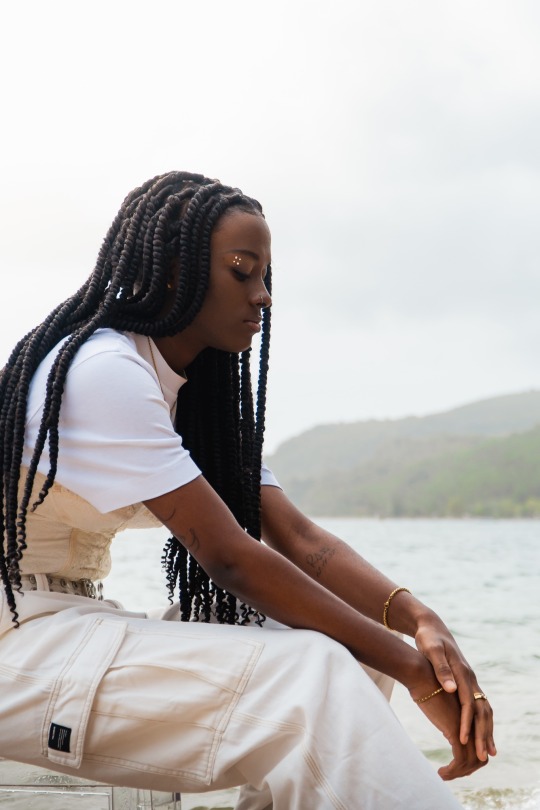
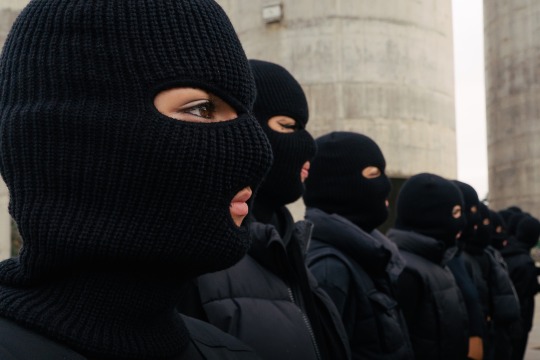


SAUDADE
Descrição
Letra: David Carreira, Bluay, Chelsea Dinorath
Composição: Ludo, TXS, Geminyy, Daus, Fumaxa, Chelsea Dinorath
Mix: Pedro Villas
Master: Pedro Villas
Produção: Ludo, Daus e Fumaxa
Produção Executiva: Brainstorm
Agradecimentos: Benecar e Diversões Alentejanas, Jazzy Dance Studios
VIDEOCLIP:
Produtora: 35 Silver Visuals
Realizador: André Antonyuk
DoP: João Carneiro
Op Cam: André Galhofa
AD: Lia Rodrigues
AC: Pedro Gouveia
Gaffer: Ricardo Giglio
Montagem: Nuno Mina
Edição: André Antonyuk
Grading: The Yellow Color
Piloto Drone: Alexandre Balas
Styling David Carreira: Gonçalo Mello
Styling: Raquel Neto
Styling Asst.: Carolina Viana
Casaco Bluay: Rita Oliveira
MUA: Raquel Peres
Fotógrafo: João Afonso
BTS: Leonardo Viegas
Dir. Arte: Isabel Tavares
Produção: David Carreira, André Antonyuk, André Galhofa
Catering: Vanessa Galhofa
AP: Filipe Bronze, Edson Morais
Produção Executiva: Brainstorm - Mariana Júdice e Ricardo Fernandes
Coreografia:
César Nusik
Bailarinos Jazzy Dance Studio:
Amélia Graça
Ana Carolina Fonseca
Beatriz Tavares
Débora Rafael
Diana Rosa
Elson Sequeira
Francisca Sequeira
Helena Silva
Junior Silva
Maria João Carvalho
Marta Pimenta
Matilde Barroso
Rita Talefe
Marta Nóbrega
Diana Amaro
Helena Costa
Beatriz Rodrigues
Luna Dyatlova
Mafalda Martins
Maria Cecília
Maria Gomes
Tomás Arnaut
Daniela Vieira
Maria Leonor Ramos
Carolina Romeiro
Estela Rodrigos
Catarina Ferreira
Guilherme Seixas
Carolina Vilela
2 notes
·
View notes
Text
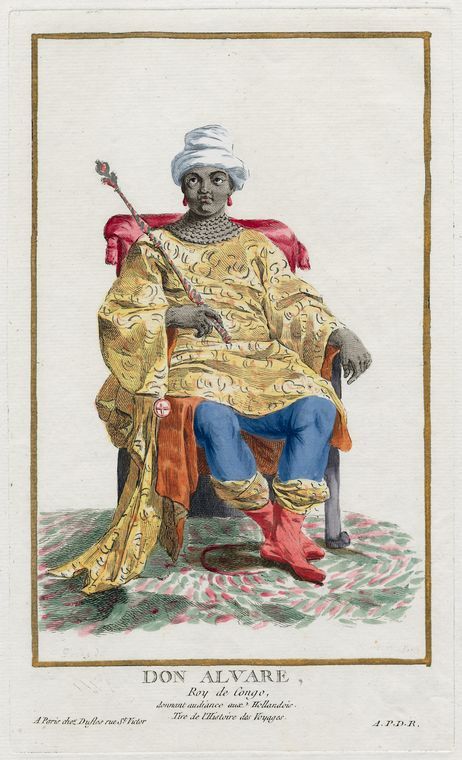
King Alvaro I of Congo by Pierre Duflos,
Álvaro Nímia Luqueni Amvemba was born around 1530, the son of Dona Isabel Nímia Luqueni, the second daughter of Afonso I of the Congo to an unknown man. His mother later married Henrique I of the Congo, who became king in 1566. Alvaro managed the kingdom as regent of the Congo during periods when Henrique I was away from the capital. The king died in battle in 1567 and Álvaro I was sworn in as the new king, the first king of the Coulo dynasty, named after the village of Coulo outside the capital: São Salvador do Congo.
#reino do congo#kingdom of congo#african royalty#couolo dynasty#house of kwilu#pierre duflos#portuguese empire#império português
2 notes
·
View notes
Text
O incrível mundo da literatura que liga a cultura e a história portuguesas: passado e hoje
Depois de ter percorrido os conteúdos atribuídos neste primeiro trimestre da disciplina CTT (Cultura, Temas e Textos) de Português, que foram: a Rainha Santa, D. Pedro I, Pedro, o Cru, o Interregno de 1383-1385, Fernão Lopes e as suas crónicas, o Mestre de Avis e a Ínclita Geração, Luís Vaz de Camões e Os Lusíadas, e finalmente, a Dinastia de Bragança/Casa de Bragança, o nosso principal objetivo, além de dar a conhecer estes conteúdos históricos, culturais e artísticos, é procurar relacioná-los de todas as formas possíveis.
Assim, esta publicação procurará encontrar o maior número possível de relações entre estas figuras históricas, os textos e o modo como se desenrolaram na cultura portuguesa.
⊱ ━━━━━━━━━━━━━.⋅⚝⋅.━━━━━━━━━━━━━━ ⊰
Em primeiro lugar, as ligações históricas são as mais visíveis, de acordo com os textos referidos. Por exemplo, na obra Pedro, o Cru, de António Patrício, encontramos o registo de figuras históricas como D. Pedro I, D. Inês de Castro e D. João I, divididos entre a dinastia afonsina e a dinastia de Avis, uma vez que D. João I será o iniciador desta nova dinastia e, por isso, será uma peça-chave nas crónicas de Fernão Lopes.
Assim, nas crónicas de Lopes as principais figuras históricas são D. Pedro I, D. Fernando e, finalmente, D. João I. Nelas vão-se explicar o reinado dos últimos reis da dinastia Afonsina (D. Pedro I e D. Fernando I) e, mais tarde, o interregno de 1383-1385 onde D. João I vai resolver o conflito tornando-se rei de Portugal e criando uma nova dinastia chamada Avis e assumindo ser o Mestre de Avis.
De seguida, os escritores emergentes encarregar-se-ão de mostrar o percurso da monarquia portuguesa. Este seria o caso de Luiz Vaz de Camões que, na sua obra Os Lusíadas, retratou inúmeros acontecimentos históricos desde D. Afonso IV, passando por D. Pedro I, D. Inês de Castro, D. João I e os seus filhos (a Ínclita Geração) até ao último reinado a que o escritor assistiu em vida, o de D. Sebastião, que seria um dos últimos antes de Portugal perder a sua independência e ter uma nova dinastia espanhola, a dinastia Filipina.
Aqui terminam as relações históricas encontradas em referência aos textos solicitados na disciplina, no entanto, muitas outras podem ser encontradas fora do contexto literário. Por exemplo, todos os nomes da Ínclita Geração têm uma relação íntima com a ascendência monárquica, como é o caso de Isabel Duquesa de Borgonha que ostentava o nome da Rainha Santa de Portugal, ou por outro lado, o filho bastardo de D. João I, D. Afonso Duque de Bragança que, graças à sua união matrimonial e à criação do ducado que carrega, pôde dar origem à Casa de Bragança da qual nasceu o nome da última dinastia de Portugal, a dinastia de Bragança, e também deixa o nome no país até aos nossos dias com a família Bragança.
Agora, em segundo lugar, podemos passar às relações literárias e culturais, pois estão intimamente ligadas, uma vez que os autores se inspiram no seu ambiente e na sua época. Como primeiro elemento, podemos tomar o movimento precursor dos textos de Fernão Lopes e Luís Vaz de Camões, o Humanismo e o Classicismo, respetivamente. Enquanto um se centrava na exaltação do indivíduo, o outro procurava imitar a arte clássica dos seus antepassados. Foram movimentos que responderam às necessidades da sociedade do seu tempo.
Isto também se reflectiu no estilo de escrita de cada autor. Por um lado, António Patrício era conhecido por escrever com muitos adjectivos que enchiam os seus textos de sensibilidade, tomando elementos da realidade mas embelezando-os com a arte da palavra. Por outro lado, podemos encontrar Fernão Lopes cuja escrita era um retrato fiel da realidade, sem perder o dinamismo das narrativas e dos diálogos. E ainda, temos Luís Vaz de Camões, que se destaca desses autores, pois era um poeta, que chegou a criar uma poesia própria chamada poesia camoniana.
E, finalmente e em terceiro lugar, os temas destes textos, que têm, sem dúvida, raízes históricas e culturais que tiveram impacto na sociedade portuguesa. Assim, a morte, o amor, as conquistas e as expansões marítimas estão entre os elementos mais comuns encontrados nos três textos referidos na disciplina. Estes devem-se ao contexto histórico em que cada autor viveu e, naturalmente, ao estilo de escrita e ao movimento artístico que viveram. No entanto, destacam-se pelo facto de cada um deles a ter exaltado à sua maneira, pelo que cada texto é, até hoje, um ponto de referência para a criação, aperfeiçoamento ou continuação da língua portuguesa.
⊱ ━━━━━━━━━━━━━.⋅⚝⋅.━━━━━━━━━━━━━━ ⊰
Ao concluirmos este percurso através dos textos Pedro, o Cru, as crónicas e Os Lusíadas de António Patrício, Fernão Lopes e Luís Vaz de Camões, respetivamente, determinámos a relevância destes manuscritos e todo o peso que o seu contexto histórico carrega, ligado aos seus autores e ao seu ambiente, e como este conjunto de elementos impactou a comunidade lusófona, em especial Portugal, para um crescimento cultural que consagrou esta arte de forma global.
Assim, o objetivo deste portfólio, a além de dar a conhecer esta informação, foi cumprido, pois foram encontradas enormes relações entre estas figuras históricas e artísticas no que diz respeito a textos e cultura. Portanto, este espaço conhecido como portfólio servirá como um exercício de auto-aprendizagem e autoavaliação que irá avançar ao longo do tempo e que, sem dúvida, o facto de estar registado neste espaço digital servirá de conhecimento para o nosso futuro.
⊱ ━━━━━━━━━━━━━.⋅⚝⋅.━━━━━━━━━━━━━━ ⊰
#art#aesthetic#literature#portuguese literature#portuguese#portugués#universidad#university#universidade#escritos#textos#monarquia#história#historia#history#culture#cultura#poesia#poesia camoniana#camoniana#rei#reis#rey#reyes#obra teatral#obra
0 notes
Text
Police officers at a station must solve a murder case.
Credits: TheMovieDb.
Film Cast:
Commissaire Buron: Benoît Poelvoorde
Louis Fugain, le suspect: Grégoire Ludig
Fiona, sa femme: Anaïs Demoustier
Champonin: Philippe Duquesne
Franchet / Carine Lustain: Jacky Lambert
Sylvain Buron, le fils: Orelsan
Narta: Jeanne Rosa
Daniel: Vincent Grass
Le chef d’orchestre: Laurent Nicolas
Le cri de la victime: Alain Chabat
Le premier policier: Michel Hazanavicius
Le deuxième policier: Pedro Winter
Louise: July Messéan
Philippe, un policier borgne: Monsieur Fraize
Film Crew:
Director of Photography: Quentin Dupieux
Producer: Thomas Verhaeghe
Producer: Mathieu Verhaeghe
Producer: Adrian Politowski
Producer: Nadia Khamlichi
Costume Design: Isabelle Pannetier
Associate Producer: Julien Deris
Associate Producer: David Gauquié
Associate Producer: Etienne Mallet
Sound Engineer: Guillaume Le Braz
Original Music Composer: David Sztanke
Production Design: Joan Le Boru
Makeup Artist: Olivier Afonso
Movie Reviews:
0 notes